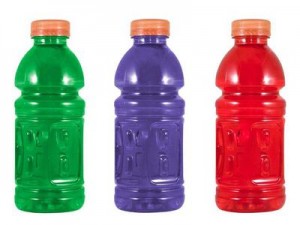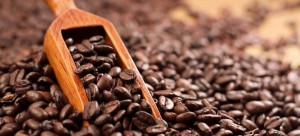SNI: From the standpoint of rehydration, is there an ideal percentage of carbohydrate that is needed when consuming fluids? Is there a combination of carbohydrates that is ideal?
Stacy: In my experience working with athletes, they are so focused on calories that they don’t pay attention to the fact that what they are drinking contributes to FUELING, not HYDRATION.
Let me explain.
In science speak: During prolonged exercise, fluid and salt losses through sweating reduce plasma volume which leads to heart rate drift in association with hyperthermia and reductions in performance. Oral rehydration with water reduces the loss of plasma volume and lessens heart rate drift and hyperthermia. Moreover, the inclusion of sodium in the rehydration solution to levels that double those in sweat (i.e., around 90 mmol/l Na+) restores plasma volume when ingested during exercise, and expands plasma volume if ingested pre-exercise.
In real person speak: During exercise you lose water and salt through sweat. When you lose this water and salt, the watery part of your blood also drops. With less water in your blood, the blood is more viscous, thus you end up with a higher heart rate, lower power production, and a greater rise in core temperature->all leading to fatigue, reduced performance, and the dreaded power decline when it counts the most: at the end of a race.
There is a competition within the body when you start to exercise: Your muscles and your skin fight for your blood. Blood goes to the muscles for metabolic function. Blood goes to the skin to get rid of the heat produced by the working muscles. As body water drops, this competition becomes more fierce, and the skin blood flow will win out- Primarily because heat is a greater threat to the body than keeping the muscles working (which produces heat..).
The fatigue you experience is that drop in blood flow to the muscle- basically you have less metabolism functioning plus protein denaturing (the contractile proteins denature, aka stop working, in muscle temperatures >~39’C).
“Ok” you say, “But I’m drinking so I should be able to circumvent this blood volume problem.”
BUT here is where things go south. It’s what you’re drinking that’s making you dehydrated.
The mass market out there has the message that when you drink a 4-8% carbohydrate solution with sodium (~220mg sodium per liter) you are taking care of your hydration and fueling needs. The focus is always on carbohydrate availability and calories. (If you do a literature search on hydration and carbohydrate for endurance exercise you will find the hydration research is really carbohydrate availability in the form of liquid calories.)
I’m here to tell you, as a physiologist that specializes in hydration, thermoregulation, and performance; this is a misleading and incorrect message.
Let’s look at two key factors needed to pull fluid into the body’s fluid spaces:
1) You need what you are drinking to have an osmolality below that of blood. (osmolality is the amount of solutes in a solution. The more active solutes in a fluid, the higher the osmolality. Blood sits ~285mOsm)
2) You want what you are drinking to meet the physiological needs of fluid absorption- this means that you want your fluid to have fluid co-transporters: the intestinal cell membranes use sucrose, glucose, and sodium (Na+) as facilitators to get fluid across the cells into the water spaces of the body.
Now let’s look at the nutritional aspects of a typical sports drink:
– 5-6% carbohydrate solution
– Osmolality of ~300-320mOsm
– Sugars: maltodextrin, fructose, sucrose
– Sodium: ~220mg per liter
With the higher osmolality than blood, the physiological response is to pull water from within the vascular spaces of the body to “dilute” higher osmolality. This creates a net gradient of water leaving the body into the digestive system. Problem: effective dehydration and GI distress.
The 5-6% solution provides exogenous carbohydrate but not in the levels needed to sustain longer term endurance exercise without energy fluctuations (you want 4-6 calories per pound of body weight of mixed macronutrient food- different rates of oxidation/breakdown means a greater time and titration of fuel to the body)
The maltodextrin and fructose are notorious for causing GI distress; free fructose (e.g. not from sucrose) has to go through the hepatic portal vein to the liver to be processed, and no rate limiting effect for this free fructose will cause a “dumping” of fructose into the system, leading to major GI distress. Maltodextrin exits the stomach quickly, but in the intestines, pulls water into the digestive tract = GI distress (aka diarrhea!)
Sodium and sucrose- these are the only two potential “helpers” in fluid absorption, BUT by the nature of the osmolality of the 5-6% solution, the net gradient of fluid is to come from within the body into the gut, thus the sodium and sucrose work with this gradient to facilitate fluid movement through the intestinal cell membranes into the GI tract.
SNI: Should protein be in a rehydration drink? Yes, No, Maybe so?
Stacy: Post exercise is a key window for several things; primarily being maximum effect on muscle synthesis and glycogen recovery. The “critical” window for high quality protein intake is the 30 min post exercise; this is also part of the critical rehydration window- start rehydrating to decrease the negative effects on the immune system. I’m bending towards the question in a roundabout way to say Yes, protein is beneficial for rehydration just as it is essential for muscle reparation and synthesis. A small inclusion of protein in a low carbohydrate-concentration rehydration drink does facilitate plasma volume expansion, increases absorption of electrolytes and boosts levels of plasma proteins, which promote long term hydration after exercise. Keep in mind, however, rehydration post-exercise is different from rehydration from a long day at work, not drinking. The protein promotes muscle reparation, but also adds calories. Being cognate in the timing of your nutrients becomes critical for recovery and body composition changes.
SNI: What are your thoughts on caffeine? It is commonly held that caffeine is a dehydrating agent. What’s the science say?
Stacy: Ah, “Black Gold”… Caffeine is a great addition to any endurance athlete’s arsenal for performance. There are three ways caffeine may provide ergogenic effects. First, the central nervous system is directly stimulated by caffeine (blocking receptors for adenosine and increasing plasma catecholamines), which helps reduce the sensation of fatigue, increases alertness, and increases muscle recruitment. Second, caffeine has been shown to improve endurance through the increased utilization of fat as a fuel and sparing carbohydrate utilization (a.k.a glycogen sparing effect); and most recently, it has been demonstrated that caffeine increases the calcium content of skeletal muscle, thus enhancing the strength of muscle contraction. Caffeine & Hydration – Staying hydrated, while important for humans at all levels of activity, is especially important for athletes during vigorous exercise. Historically, athletes have been advised against consuming caffeine because of caffeine’s mild diuretic effect. However, a point often missed is that any fluid,  including water, will also have a mild diuretic effect. In a review of hydration and caffeinated beverages, Lawrence Armstrong, PhD concluded that “it is unlikely that athletes and recreational enthusiasts will incur detrimental fluid-electrolyte imbalances if they consume caffeinated beverages in moderation and eat a well-balanced diet.” Contrary to popular belief, research has shown that caffeinated beverages can and do contribute to hydration.
including water, will also have a mild diuretic effect. In a review of hydration and caffeinated beverages, Lawrence Armstrong, PhD concluded that “it is unlikely that athletes and recreational enthusiasts will incur detrimental fluid-electrolyte imbalances if they consume caffeinated beverages in moderation and eat a well-balanced diet.” Contrary to popular belief, research has shown that caffeinated beverages can and do contribute to hydration.
SNI: For the endurance athlete who just ran, cycled or swam for 2 hours, what would YOU suggest they consume immediately post workout to promote fluid balance, glycogen repletion and skeletal muscle recovery? Do you have a ‘Stacy Sims recovery’ cocktail?
Stacy: There are two options here, one is nonfat greek yogurt with manuka honey within 30 min post exercise to address the nutritional needs of the muscle (yogurt is great for whey and casein, potassium, sodium, calcium, magnesium; manuka honey provides a bit of extra carbohydrate with natural immune boosting properties), then over the course of 2 hours, slowly rehydrate with a 1.5% glucose-sucrose solution with 200mg potassium and 100mg sodium per 16oz at a rate of 0.15oz per pound of body weight per hour. The second option (and my “go-to”) is OsmoNutrition’s Acute Recovery. It is an organic, high quality (no hormones, non-GMO) protein recovery drink. It is unique as well as it doesn’t have any antioxidants in it and it has a wee bit of green tea extract for caffeine. As much hype as there is around antioxidants, you really don’t want them close to the end of exercise as antioxidants impede mitochondrial adaptations to endurance exercise stress. And the wee bit of caffeine helps facilitate glycogen repletion ~66% over protein+carbohydrate alone. In addition to this drink (again within 30 min post exercise), I recommend the same dosage of the 1.5% solution per above. Trying to cover both nutritional needs of the body with rehydration needs requires the separation of food and fluid.. Post exercise the first point to cover is protein and carbohydrate; the second aspect to cover is total fluid recovery. The window for muscle recovery is much smaller than fluid recovery; thus pay attention to the acute recovery needs first to maximize the adaptations induced from the exercise stress.
SNI: What do YOU personally consume pre, during and post-workout?
Stacy: Ah! I’m not training much right now as work and my new daughter take most of my time; but when I do head out, I usually have the pre covered by my most recent meal, during I use Osmo Active hydration with real food (I tend to like homemade protein bites or power cookies…) and post exercise, Osmo Acute recovery.
SNI: What athlete do you admire the most and why?
Stacy: There are so many great role models and inspirational women out there, including some of my own clients; but I’m going to pull a name out of the past: Gabrielle Reece. She was my role model when I first discovered competitive sport and I still admire her for everything she has accomplished. Not only is she a world class athlete, she is a strong role model for athletic, career driven moms- not a super woman, but close enough!
BIO: Dr. Stacy Sims, MSc, PhD
Exercise Physiologist-Nutrition Scientist, CISSN
CRO-Research Scientist
Osmo Nutrition
Stacy served as an exercise physiologist and nutrition scientist at Stanford University from 2007-2012 where she worked as an environmental exercise physiologist and nutrition scientist specializing in recovery, and nutritional adaptations for health, body composition, and maximizing performance. During the past decade Stacy has worked as an environmental physiologist and nutrition specialist for top professional cyclists, ultraswimmer Jamie Patrick, the Garmin/Slipstream Pro Cycling Team, USA Cycling Olympic Team (BMX and women’s track cycling), Team Tibco, Flying Lizard Motorsports, and Team Leopard-Trek, among others. Stacy earned a BA from Purdue University, an MSc from Springfield College, a doctorate from University of Otago, and was a postdoctoral research fellow in cardiovascular disease prevention, thermoregulation, and women’s health at Stanford University. Stacy raced crew as an undergraduate at Purdue University, raced Ironman at an elite level in the early 2000s but now competes as a Cat 1 road cyclist and an elite XTerra triathlete.



